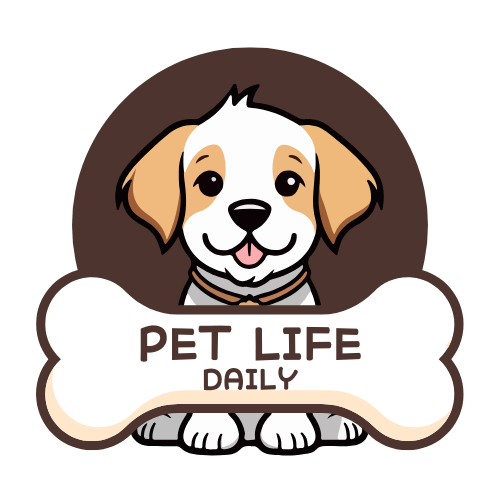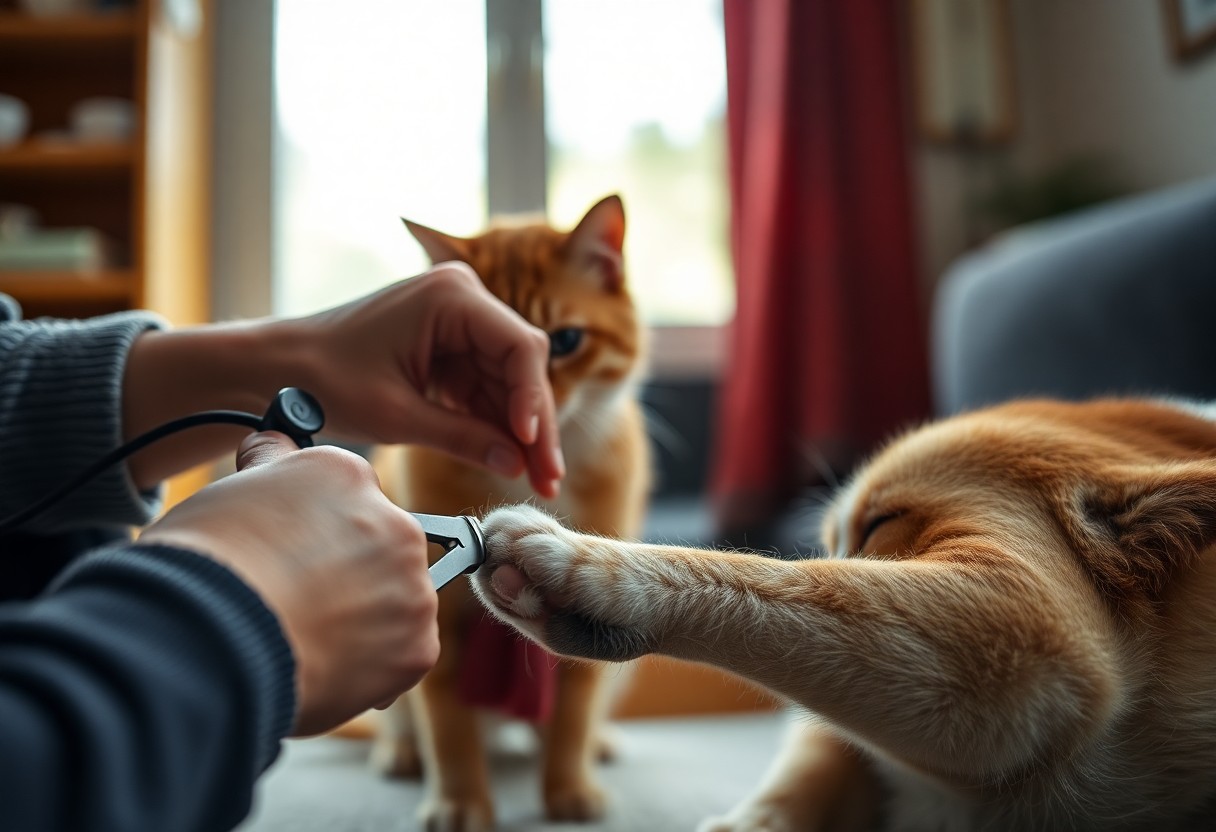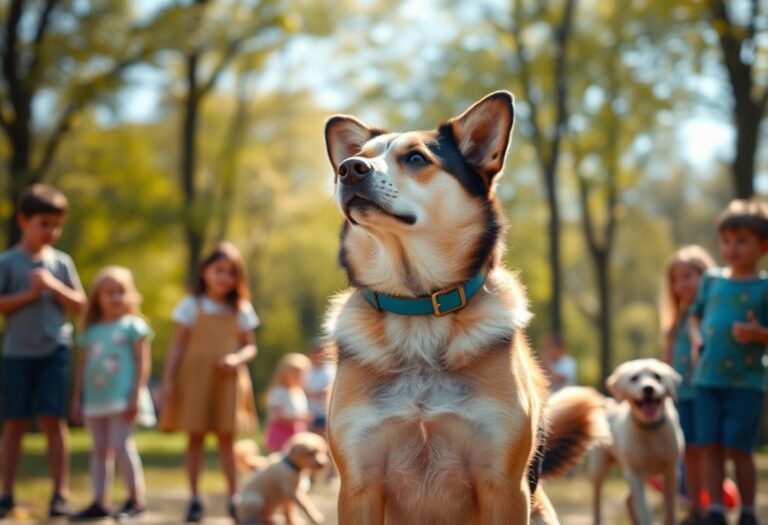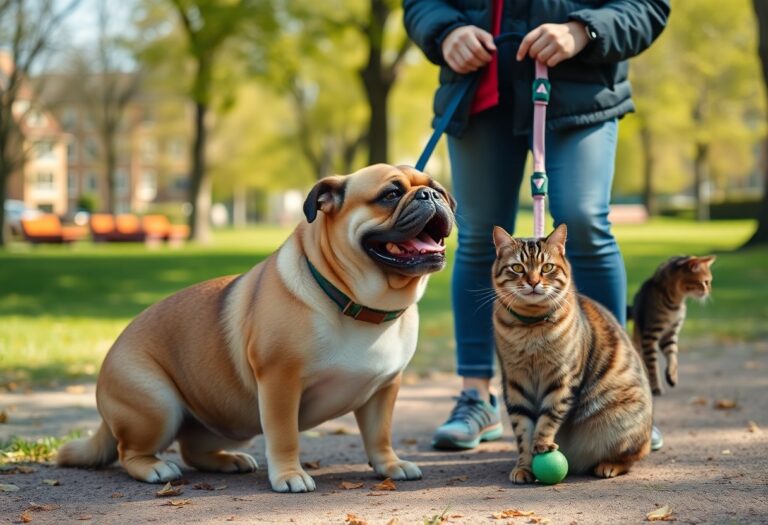Safe nail trimming for your pet is crucial for preventing injury and ensuring comfort. Regular maintenance of your pet’s nails can help avoid painful splits and tears that might occur if they become too long. You can use simple techniques and tools to trim your pet’s nails effectively and stress-free. This guide will provide you with helpful tips and methods to keep both you and your furry friend calm during the process, as well as some helpful tools to ensure a safe experience.
The Importance of Nail Trimming for Pet Health
Nail trimming plays a significant role in your pet’s overall health and well-being. Overgrown nails can lead to discomfort and pain when your pet walks, runs, or plays. The improper length not only causes a shift in their weight distribution but can also contribute to issues such as arthritis or muscle strain over time. Keeping nails maintained protects the integrity of the paw and helps prevent accidental injuries when your pet is moving around, especially on slippery surfaces. Additionally, regular nail care takes away the risk of your pet breaking a nail, which can be an incredibly painful experience and may require veterinary intervention.
Consequences of Neglecting Nail Care
Ignoring nail care can lead to a series of unfortunate outcomes for your furry friend. Long nails can curl and grow into the paw pads, causing painful infections. This condition, known as onychodystrophy, can be severely uncomfortable and often requires professional treatment. In more extreme cases, overgrown nails can lead to structural changes in the leg and overall gait, promoting a ripple effect of consequences that may affect other parts of the body.
Furthermore, calluses can develop on the pads as they compensate for the unnatural stance caused by long nails, leading to additional discomfort. The risk of injury increases significantly with longer nails, leaving your pet vulnerable to cuts and scrapes, as well as underlying health issues stemming from improper posture and walking habits. Allowing nails to remain untrimmed for extended periods can transform a simple grooming task into a complex veterinary issue.
Behavioral Impacts of Overgrown Nails
Overgrown nails do not just affect your pet’s physical health; they can also have profound behavioral impacts. Pets may display signs of anxiety or distress if their feet are in discomfort. This discomfort might lead to avoidance behaviors, such as shying away from walks, which could eventually result in decreased exercise and weight gain. If your furry friend associates the sound of clattering nails on floors or other surfaces with discomfort, this may deter them from engaging in normal activities, such as playful antics or jumping up for a cuddle.
Additionally, when pets experience pain or discomfort from their nails, they may become more irritable or defensive, leading to a change in their demeanor. A once playful dog could transition into a more withdrawn or aggressive state if they feel vulnerable due to their overgrown nails. These behavioral shifts not only affect the pet’s quality of life but also can pose challenges in your relationship. Regular nail maintenance serves as a fundamental part of keeping them happy and content in their daily activities.
Choosing the Right Tools for the Job
Selecting the correct tools for pet nail trimming can make the process smoother and more efficient. You’ll find a variety of nail trimmers designed for pets, each with unique features that cater to different sizes and types of nails. The right tool can ease anxiety for both you and your pet, ensuring a safer experience. If you’re unsure where to start, consider the nail trimmers available on the market to make an informed choice that fits your furry friend’s needs.
Types of Nail Trimmers: Pros and Cons
| Type of Trimmer | Pros | Cons |
|---|---|---|
| Scissor Trimmers | Good for large, thick nails | May crush nails if not used correctly |
| Guillotine Trimmers | Efficient for small to medium nails | Can be difficult to use for dogs that fidget |
| Electric Nail Grinders | Creates a smooth finish, less chance of splitting | Can be noisy; may scare some pets |
| Claw Scissors | Designed specifically for cat nails, precise cut | Not ideal for thicker nails |
| Cordless Nail Grinders | Portable and easy to maneuver | Battery life can vary, might require recharging |
Essential Accessories for Safe Trimming
In addition to choosing the right nail trimmer, having a few imperative accessories can help enhance the safety and success of your nail trimming sessions. A quality pet first-aid kit is a must-have, as it should contain styptic powder or a similar product to help manage any accidental cuts or bleeding. Additionally, using a soft, calming harness can help keep your pet secure during the process. You might also consider having treats on hand to reward your pet and create a positive association with nail trimming.
Additionally, consider some form of distraction, such as a favorite toy or a relaxing background noise, to ease your pet’s anxiety. Leveling up your nail trimming game with a few accessories makes the entire process smoother. Being well-prepared minimizes the risk of injury and helps to foster a calm environment, encouraging your pet to trust the process.
Step-by-Step Guide to a Stress-Free Nail Trim
| Preparation Steps | Nail Trimming Techniques |
|---|---|
| Gather necessary tools: nail clippers or a grinder, styptic powder, and treats for positive reinforcement. | Use the right angle when trimming to prevent splitting and ensure a clean cut. |
| Choose a calm, quiet environment free from distractions to help your pet relax. | Start with short sessions, clipping just one or two nails at a time to build comfort. |
| Familiarize your pet with the sound and feel of the clippers or grinder before starting. | For dogs, hold the paw firmly but gently and push their pad to extend the nail. |
| Have a partner or use a non-slip mat to secure your pet if they are particularly anxious. | Avoid cutting into the quick — trim the translucent portion of the nail only. |
Preparing Your Pet for the Experience
Building a positive association with nail trimming plays a vital role in making the experience less stressful for both you and your pet. Start by introducing your pet to the clippers or grinder at a time when they are relaxed. Allow them to sniff and explore the tools in a low-pressure environment. Offering your pet treats during this introduction helps reinforce their comfort with the process. Over a few days, gradually increase their familiarity by gently handling their paws without actually trimming the nails, further easing any apprehensions.
Choosing a specific time when your pet is naturally calmer, such as after a walk or during a quiet moment, also enhances the experience. This mindset can calm anxious pets and set a positive tone for the nail-trimming session. Aim to incorporate short training sessions focused on paw handling and reward them for cooperation. This preparation not only builds trust but also helps your pet know what to expect, laying the groundwork for a more successful nail-trimming routine.
Techniques for Effective Trimming
Effective trimming techniques can differ based on your pet’s specific needs and comfort levels. If using clippers, hold them at the right angle — about 45 degrees — to achieve a smooth cut without splitting the nail. For pets with darker nails, it can be tough to see the quick, so trim smaller sections at a time to avoid accidental bleeds. For some pets, a nail grinder might be more forgiving, as it allows for gradual shaping and smoothing of the nail without the risk of cutting the quick as you would with traditional clippers.
Maintaining a calm demeanor during the trim encourages your pet to relax. It’s helpful to establish a rhythm where you trim a few nails, and then take a break for praise and treats, reinforcing good behavior throughout the process. If you notice your pet becoming stressed or fidgety, don’t hesitate to stop and take a break. Each dog or cat’s tolerance and comfort level will differ, so adapt your trimming pace accordingly to ensure it remains a positive experience.
Utilizing nail grinding techniques requires an understanding of how to work slowly and gently. This method allows you to gradually remove layers of the nail without the pressure of clippers going directly to the quick. When using a grinder, do so in small sections and give your pet breaks as they acclimate to the sound and sensation. Observing your pet’s reactions can guide you in whether to continue or pause, making the process smoother and stress-free.
Addressing Common Concerns and Challenges
Dealing with Anxiety and Fear in Pets
For many pets, nail trimming can trigger anxiety and fear, often due to prior negative experiences or simply a dislike for the process. Handling your pet gently and using a calm voice can do wonders in alleviating their fear. If your dog or cat exhibits signs of distress, such as growling or trying to escape, take a step back and allow them to become comfortable with the tools before proceeding. Consider desensitizing your pet to the clippers by letting them sniff or play with them when they are relaxed. Positive reinforcement techniques, like treats and praise during and after the process, can encourage your furry friend to associate nail trimming with something enjoyable.
Choosing the right location also plays a significant role in minimizing anxiety. A quiet space where distractions are kept to a minimum can help your pet feel secure. Additionally, scheduling nail trims when your pet is tired or after a good play session can make them more amenable. If you still encounter resistance, breaking the process into shorter sessions can also ease the experience. Aim to trim just a couple of nails at a time, providing plenty of breaks in between for treats and reassurance.
Preventing Accidental Injury
Using the right tools and techniques is important not only for effective nail trimming but also for preventing accidental injury to your pet and yourself. Ensure that your tools are sharp and specifically designed for the type of pet you own, as dull or inappropriate tools can lead to uneven cuts or painful pinching. Holding your pet securely yet gently can also minimize any unintended wiggling, which might inadvertently cause you to cut too far or clip the quick, the sensitive part of the nail that can bleed and cause pain.
Taking additional precautions further lowers the risk of injury. For instance, using a non-slip surface or having a helper to distract or hold your pet can make the process more manageable. If you do accidentally cut the quick and your pet begins to bleed, applying a styptic powder can help stop the bleeding quickly. Always keep a first aid kit at hand that includes products for stopping minor bleeding, as it provides peace of mind and can assist in emergencies.
When to Seek Professional Help: Knowing Your Limits
Signs That Indicate a Trip to the Groomer
Some pets may show signs of distress during nail trimming, and it’s important to recognize these cues. If your pet becomes excessively anxious, aggressive, or tries to escape, consider taking them to a professional groomer. Other indicators include bleeding nails due to trimming too close or if you accidentally cut the quick, which can cause pain and apprehension towards future trims. Watching for changes in your pet’s behavior post-trim, such as limping or reluctance to walk, can also signal a need for an expert’s touch.
If you’re unsure whether to proceed with trimming at home, look for signs indicating your pet’s nail length. If their nails are clicking against the floor or curving, they might be too long and require immediate attention from a groomer. Sometimes, pets develop a negative association with nail trims due to previous stressful experiences, making it harder for you to handle the task without professional assistance.
Benefits of Professional Nail Trim Services
Utilizing professional nail trim services can offer several advantages that enhance the overall health of your pet. Groomers are often trained to handle different temperaments and can effectively manage even the most anxious animals, ensuring a less stressful experience for both you and your pet. Their specialized knowledge allows them to identify any underlying issues, such as ingrown nails or infections, before they escalate into larger problems. Additionally, they know the best methods and tools for a safe and precise cut that limits discomfort.
Pet professionals typically have access to advanced tools that can simplify the trimming process and provide more accurate results. For instance, many groomers use electric nail grinders, which can be less intimidating than clippers and prevent jagged edges. Also, if your pet is prone to nail-related anxiety, having it handled by someone experienced can improve their willingness to accept trims in the future.
Conclusion
Ultimately, trimming your pet’s nails doesn’t have to be a daunting task. By understanding the anatomy of your pet’s nails and using the right tools, you can ensure a safe and stress-free experience for both you and your furry friend. Familiarize yourself with the proper techniques, whether you choose clippers or a nail grinder, and always take your time to avoid accidents. If your pet is anxious about the process, consider introducing gradual desensitization or rewarding them with treats to make the experience more positive.
Incorporating nail trimming into your pet care routine not only promotes their comfort but also contributes to their overall health. Keeping your pet’s nails at an appropriate length can prevent painful splitting and splaying, as well as maintain proper posture. Make nail trimming a regular practice, using the methods that work best for you and your pet. By prioritizing their well-being, you can turn this necessary task into a manageable part of your pet care regimen.







